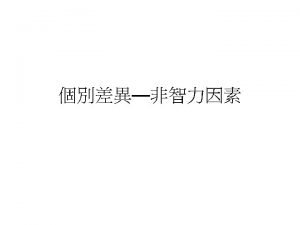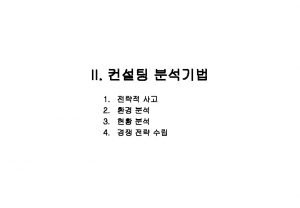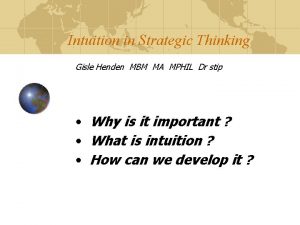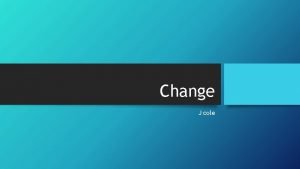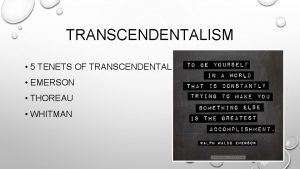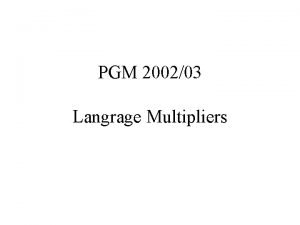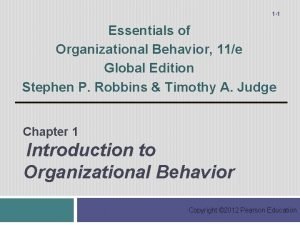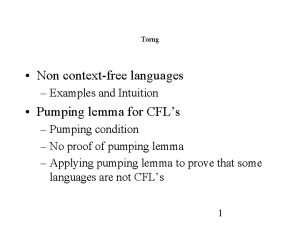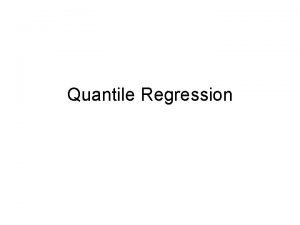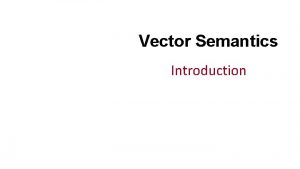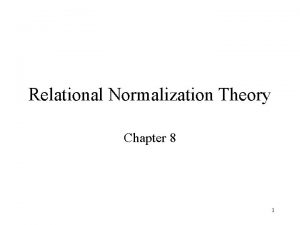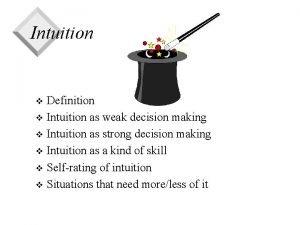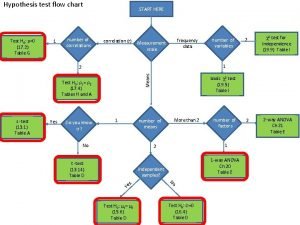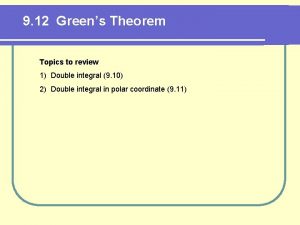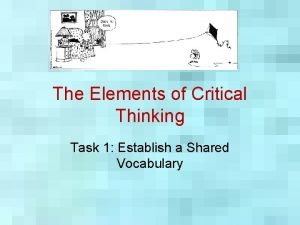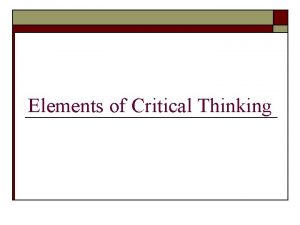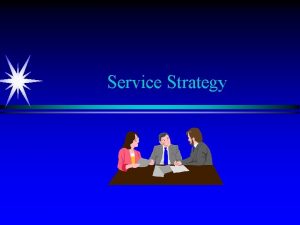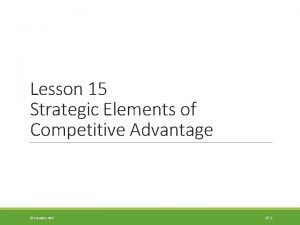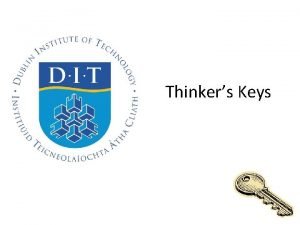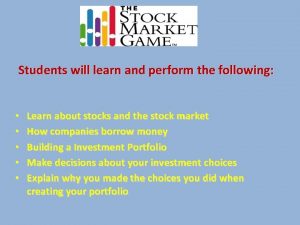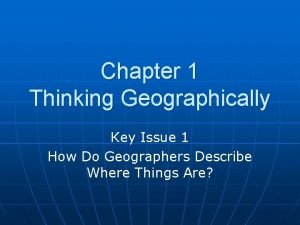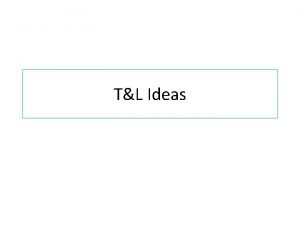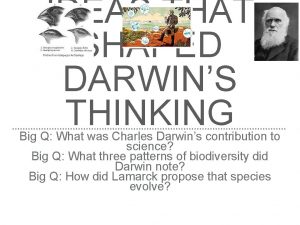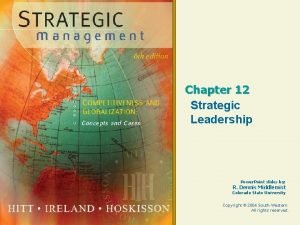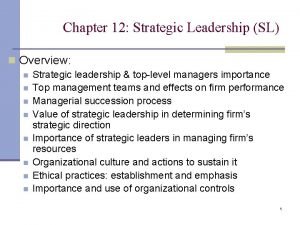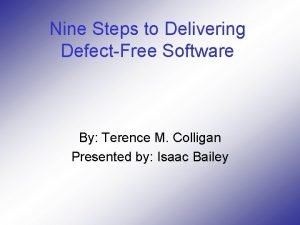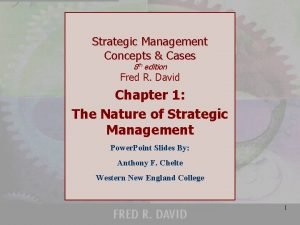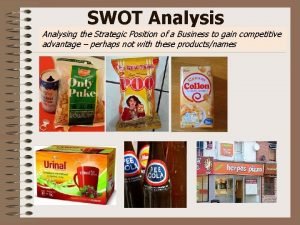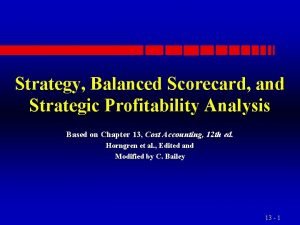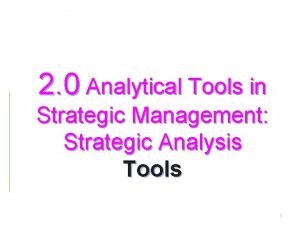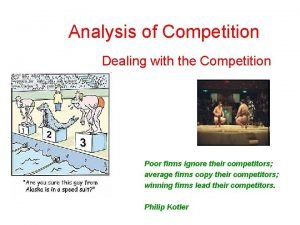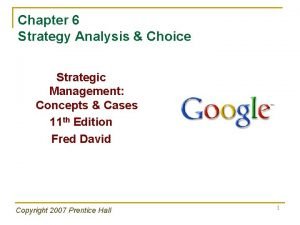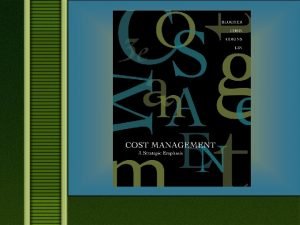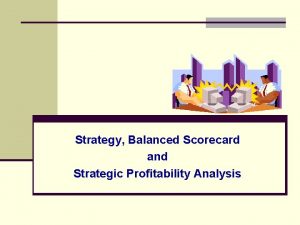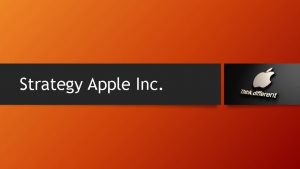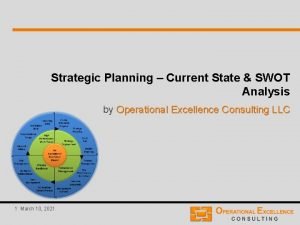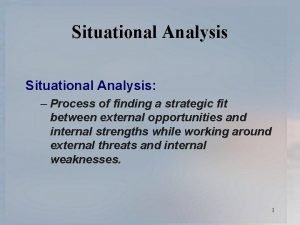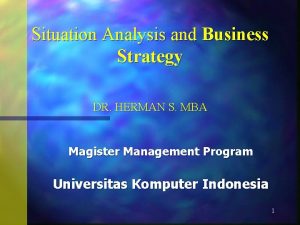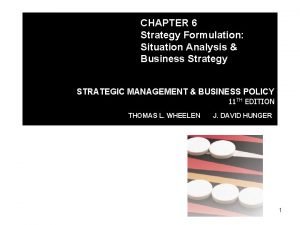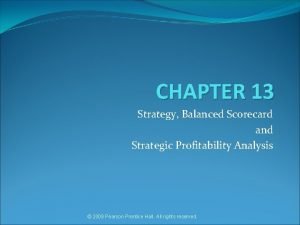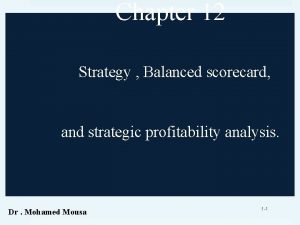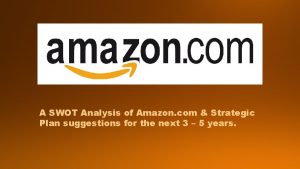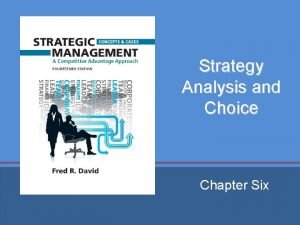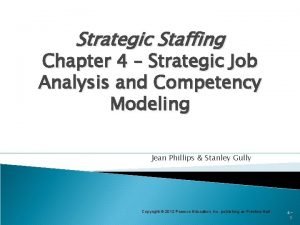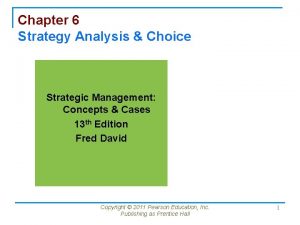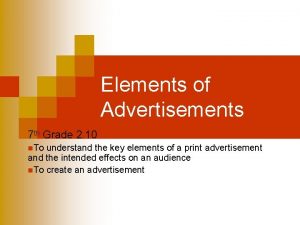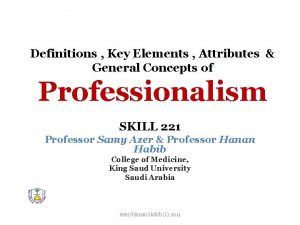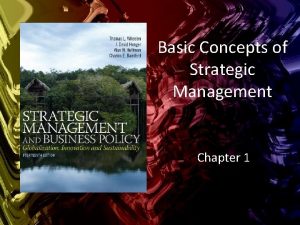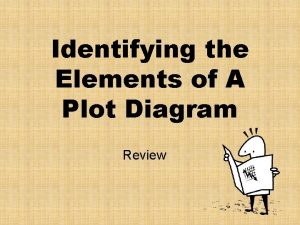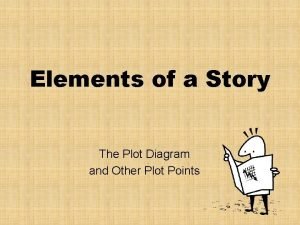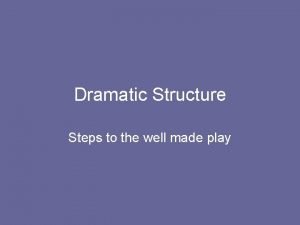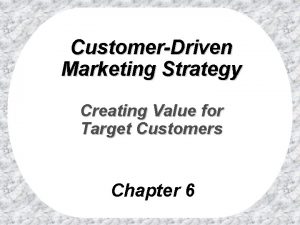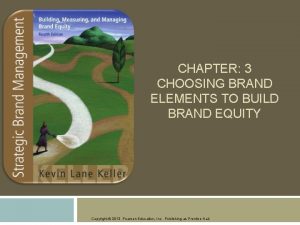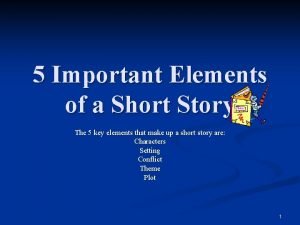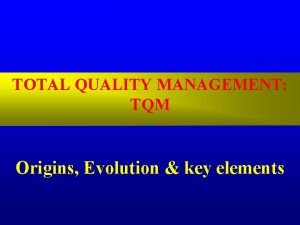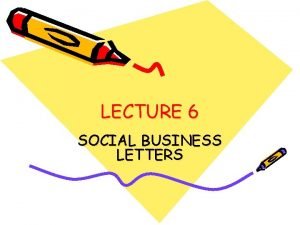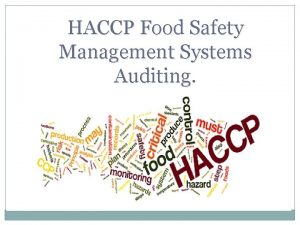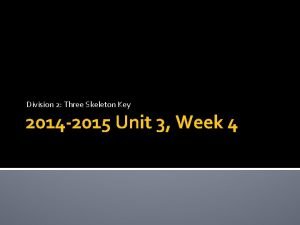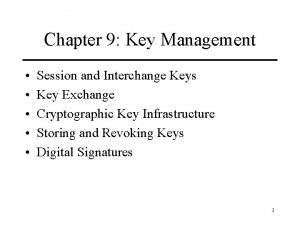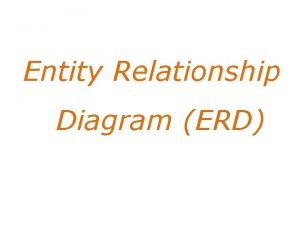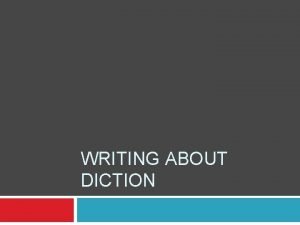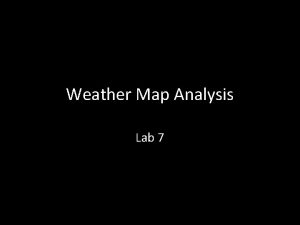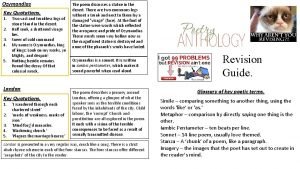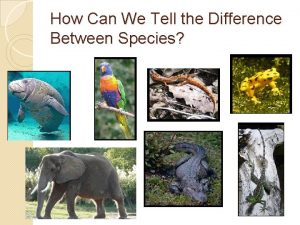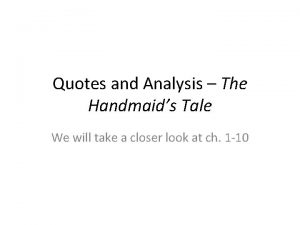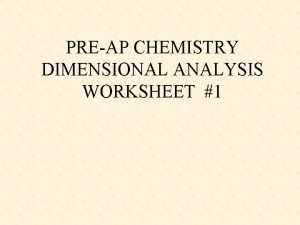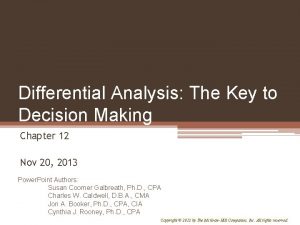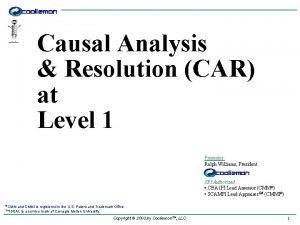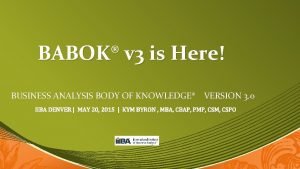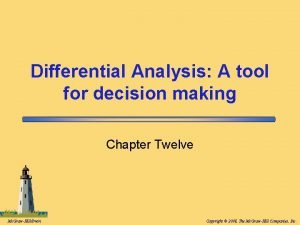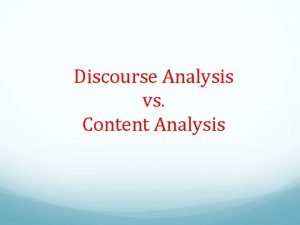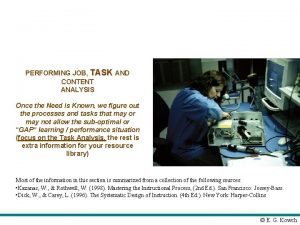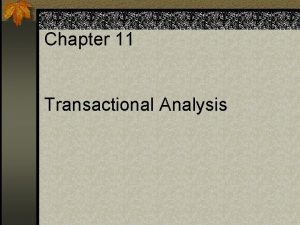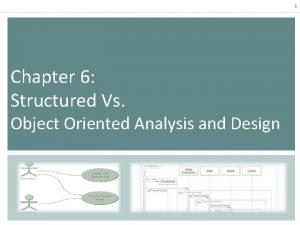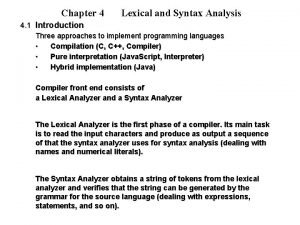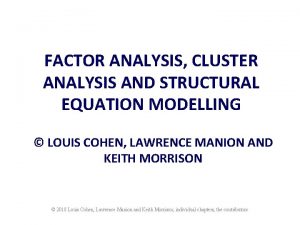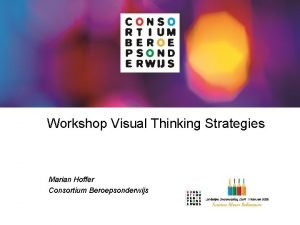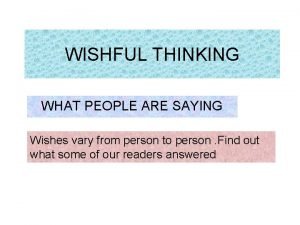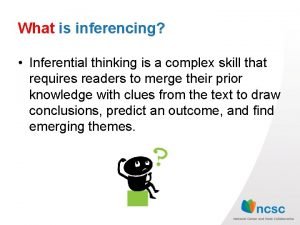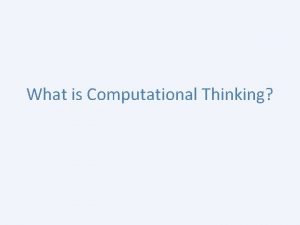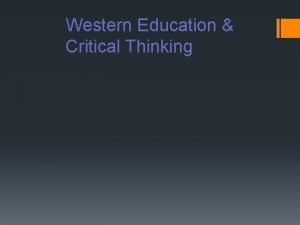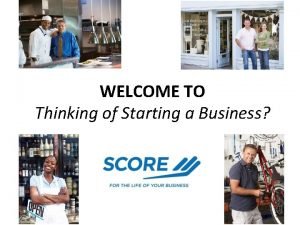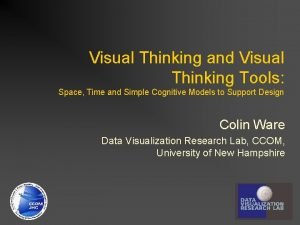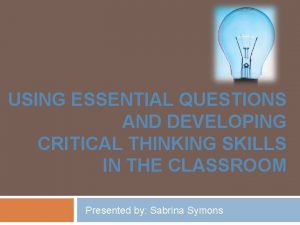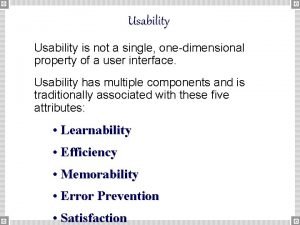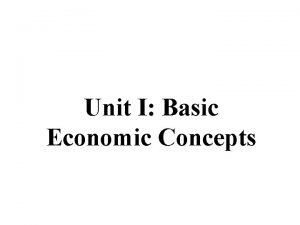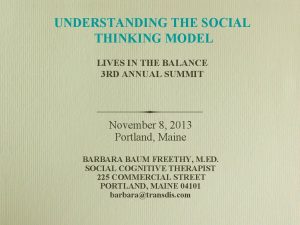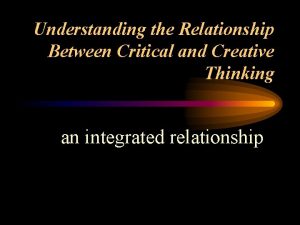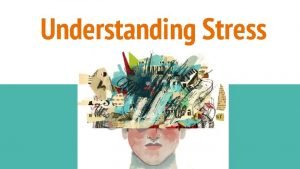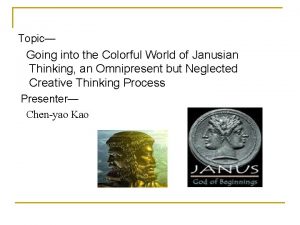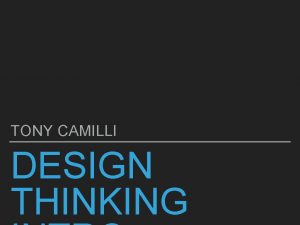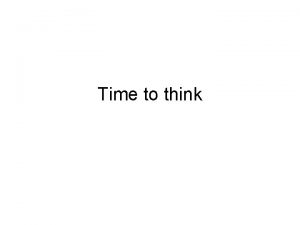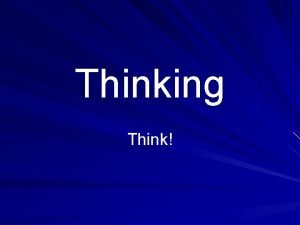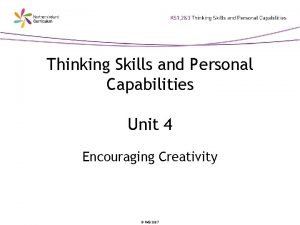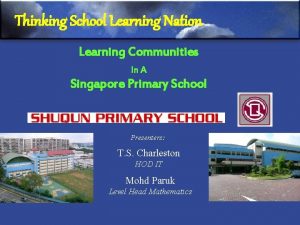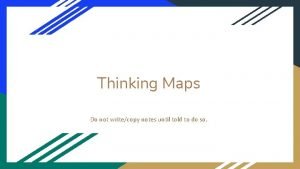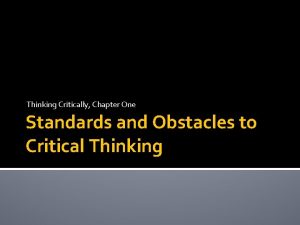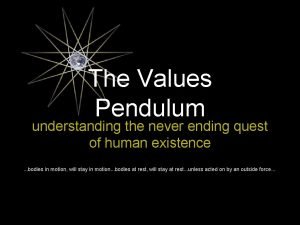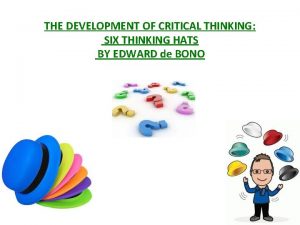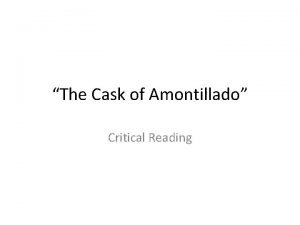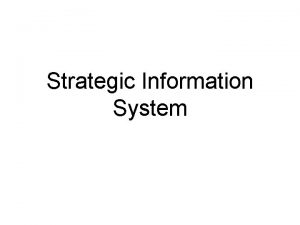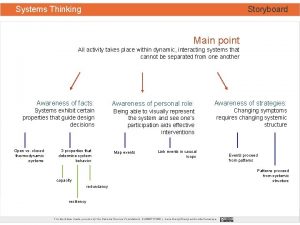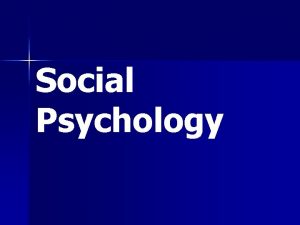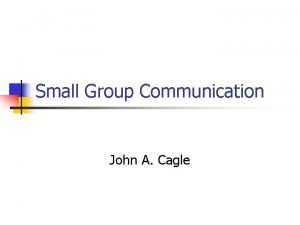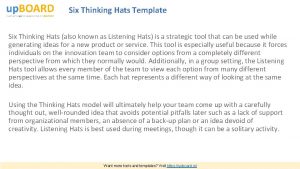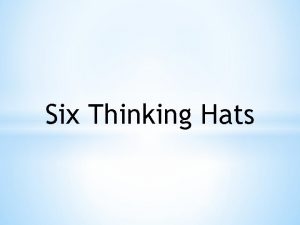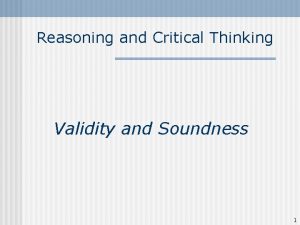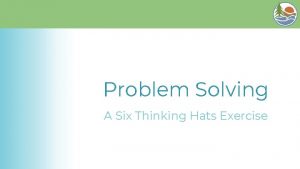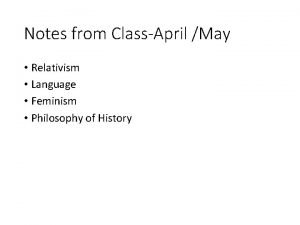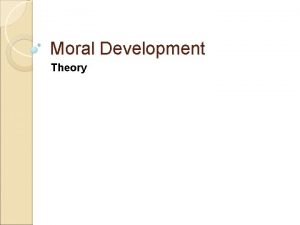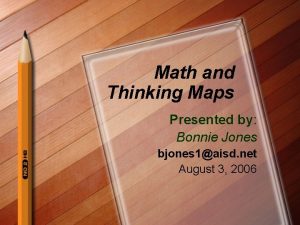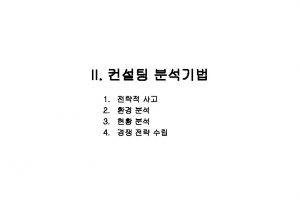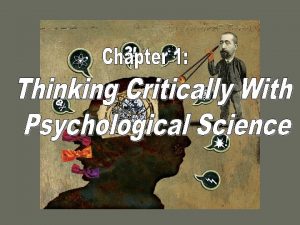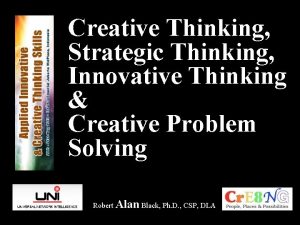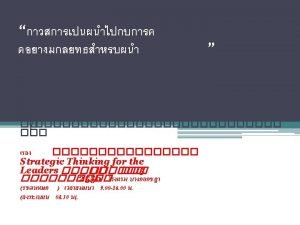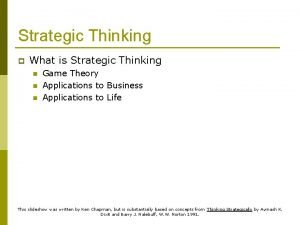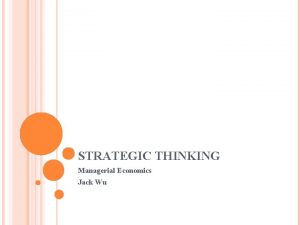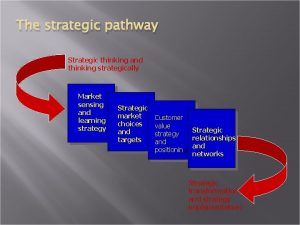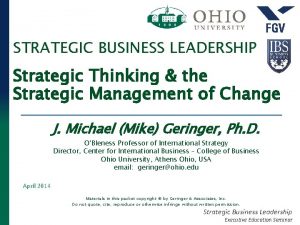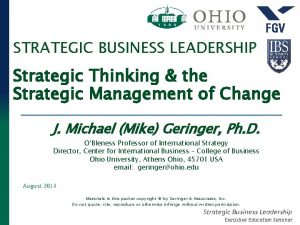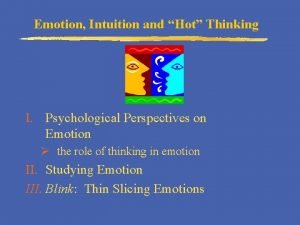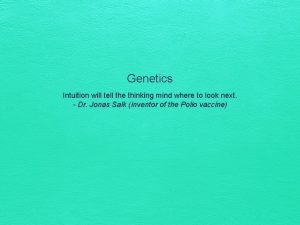q Key Elements of Strategic Thinking Analysis Intuition


























































































































































































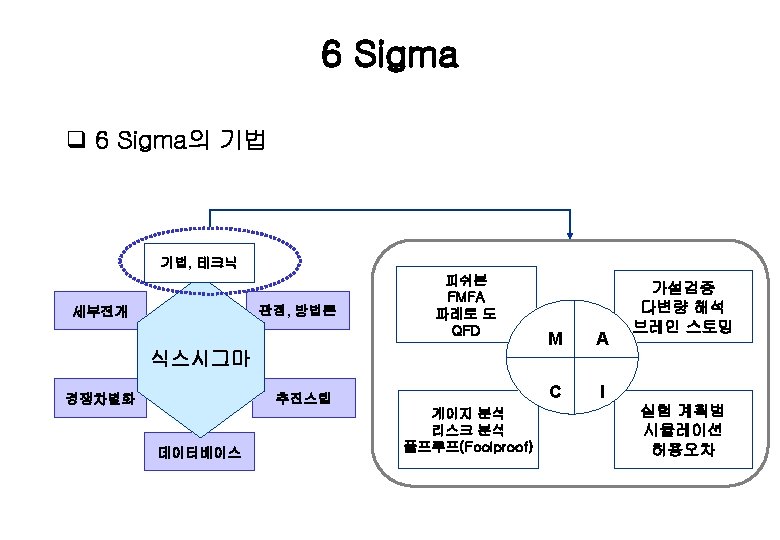
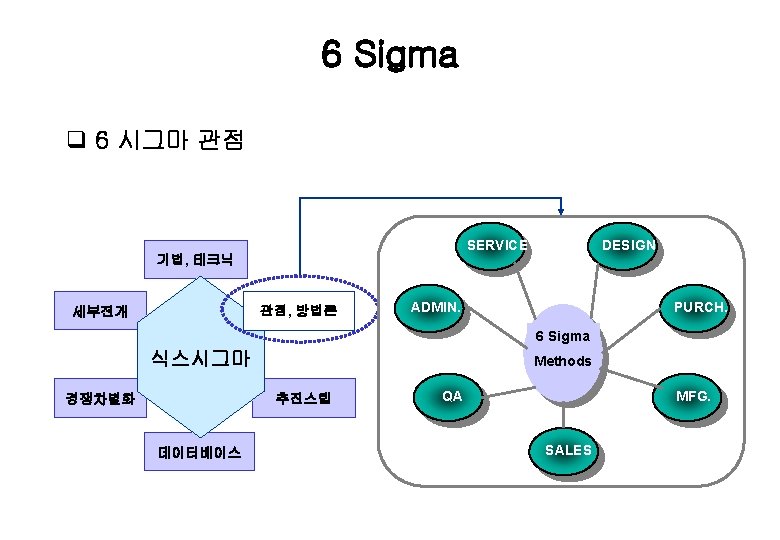


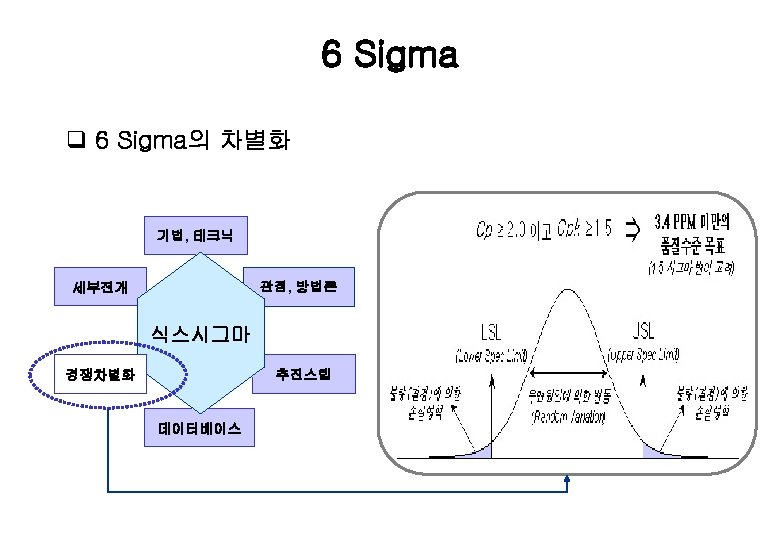

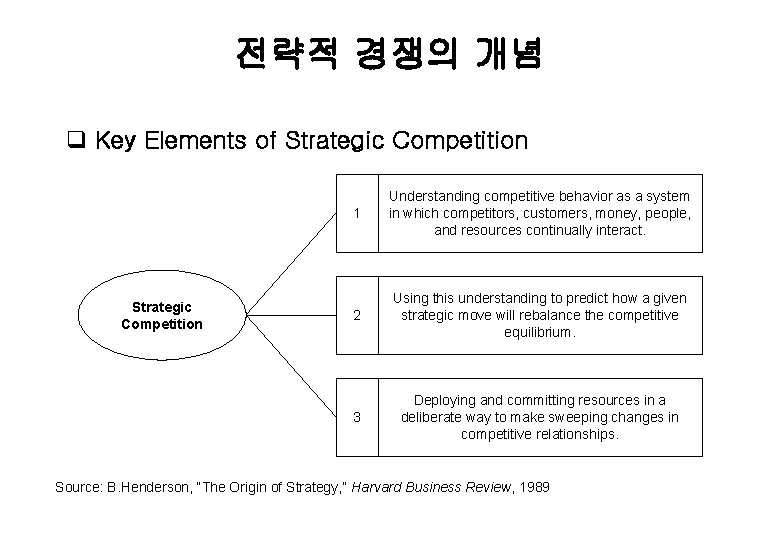


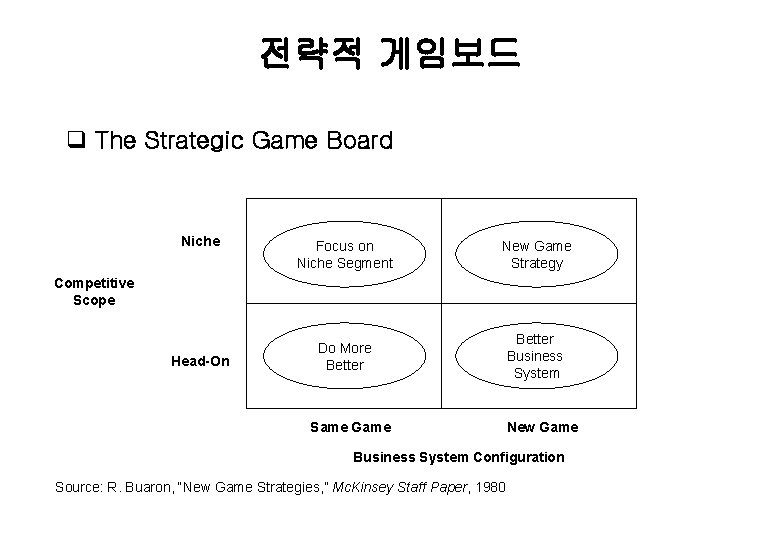

- Slides: 197







전략적 사고의 특징 q Key Elements of Strategic Thinking = Analysis + Intuition ü Strategic thinking is based on fact-based, logical analysis ü Strategic thinking challenges conventional wisdom and strives for breakthrough ideas and insights ü Strategic thinking is action and performance-oriented ü Strategic thinking is a habit of mind that can be developed through constant practice and application 출처 : Kenichi Ohmae, The Mind of the Strategist, 1982.


전략적 의사결정의 수준 q Types of Strategy 전략 수립 현실의 파악 Corporate Strategy Business Strategy Functional Strategy 기업 이상과 현실과의 차이 • 환경 분석 • 현황 분석 분석 기법 • Forces at Work • 산업구조 • BCG • SWOT • Scenario planning 등

전략 패러다임 q Multiple Strategy Paradigms Strategy as Organizational Process Networks and Business Ecosystem Business Policy Framework Strategy Value-Based Management Industry Analysis and Competitive Strategy Core Competence and Resource-Based Theory Game Theory Strategy as Portfolio of Options

전략 계획의 실행주기 q Formal Strategic Planning Cycle Stages Objective Setting Hierarchical Level ① Corporate Level Strategic Programming ③ ② Business Unit Major Tasks : ① ② ③ ④ ⑤ ⑥ ⑦ Budgeting ⑤ ④ ⑦ ⑥ Formulation of General guidelines Formulation of broad strategic action programs Consolidation of action programs Generation, evaluation, and selection of strategic programs Consolidation of strategic programs Development of tactical programs and budgets Consolidation of budgets 출처 : P. Lorange, Strategic Planning Systems, 1997


전략 대안의 도출 q Generating Strategic Options Where to Compete Brand Scope Broad-based market Leadership “Platform” Companies “Hot box” or niche product companies Narrow Scope “Product”-Oriented Strategies Integrated solution companies Computer Industry Application solution companies Geographically focused marketing companies Market/Solution – Oriented Strategies 출처 : R. Bohin, “Challenges for the Computer Industry in the 1990 s”, The Mc. Kinsey Quarterly How to Compete


SWOT Analysis q SWOT(Strength Weakness Opportunities Threats) External Analysis Internal Analysis Opportunities Strengths Threats Weaknesses Strategic Options

SWOT Analysis q SWOT (Strength Weakness Opportunities Threats) External Analysis Internal Analysis Opportunities Strengths Threats Weaknesses Strategic Options

SWOT Analysis q SWOT (Strength Weakness Opportunities Threats) External Analysis Internal Analysis Opportunities Strengths Threats Weaknesses Strategic Options


3 C Analysis q 3 C- The Strategic Triangle Customer Value Competitor Company Competitive advantage “The heart of Strategy is to create superior value to Customers” - Ken Ohamae 출처 : K. Ohmae, “Getting Back to Strategy”, Harvard Business Review, 1988.


거시환경 분석 (Macroenvironment Analysis) Macroeconomic Political/Regulatory • GDP growth • inflation • Interest rate • Exchange rate • Energy price • Political regime • Policy reform agenda • Deregulation/privatization • Trade liberalization • Antitrust regulations Company Technological • Information technology • Technology breakthroughs • New product innovation • Technology diffusion Socio-Cultural • Population trends • Consumer life-style • Woman in the workforce • environmental Concern

The “Iceberg” Model Events Trends and Patterns Structure Source: K. Van der Heijden, Scenarios, 1996.

The “Iceberg” Model Competitor Iceberg Model Performance Market Strategy Visual Differences Business Definition Resources Competences Organizational Functioning Strategic Intent Source: D. Abell, Managing with Dual Strategies, 1993 Hidden Differences



Porter’s Five Forces Framework q Analyzing Industry Structure Potential Entrants Threat of new entrants Industry competitors Bargaining power of suppliers Suppliers Buyers Rivalry among existing firms Threat of substitute products of services Substitutes Source: M. Porter, Competitive Strategy, 1980 Bargaining power of buyers

Porter’s Five Forces Framework q Drivers of Industry Attractiveness Barriers to entry Supplier Power Industrial Rivalry Threat of Substitutes Source: Adapted from Porter, Competitive Strategy, 1980 Buyer Power

Porter’s Five Forces Framework q Drivers of Industry Attractiveness (계속) Barriers to entry Supplier Power Industrial Rivalry Threat of Substitutes Source: Adapted from Porter, Competitive Strategy, 1980 Buyer Power

Porter’s Five Forces Framework q Drivers of Industry Attractiveness (계속) Barriers to entry Supplier Power Industrial Rivalry Threat of Substitutes Source: Adapted from Porter, Competitive Strategy, 1980 Buyer Power

Porter’s Five Forces Framework q Drivers of Industry Attractiveness (계속) Barriers to entry Supplier Power Industrial Rivalry Threat of Substitutes Source: Adapted from Porter, Competitive Strategy, 1980 Buyer Power

Porter’s Five Forces Framework q Drivers of Industry Attractiveness (계속) Barriers to entry Supplier Power Industrial Rivalry Threat of Substitutes Source: Adapted from Porter, Competitive Strategy, 1980 Buyer Power

Porter’s Five Forces Framework q Case Study – 세계 건설중장비 산업의 구조적 특성분석 Barriers to entry High moderate Supplier Power Industrial Rivalry Weak Buyer Power moderate Threat of Substitutes Weak


시나리오 기법(Scenario Planning) q traditional forecasting vs. scenarios Traditional forecasting Single-point forecast Scenarios Scenario A Scenario B Scenario C Scenario D Description of alternative plausible futures

시나리오 기법(Scenario Planning) q Building Blocks of Scenario Planning Drivers of Change Patterns of Interaction Multiple Scenarios Source: P. Schoemaker, “Scenario Planning : A Tool for Strategic Thinking, ” Sloan Management Review, 1995

시나리오 기법(Scenario Planning) q Case Study – 세계 광고 산업의 미래 시나리오 도출 Key Uncertainties 1. 2. 3. 4. 5. Will the evolution toward a global, borderless world continue? Can mega-agencies compete with “boutiques: in creating ads? Will advertisers remain very sensitive to potential agency account conflict? Is the fragmentation of media conducive to global, integrated marketing? Will agencies supply more than just ads, such as integrated marketing? Scenario A Total Globalization 대형 종합 광고사가 세계시장을 주도하는 경우 Scenario A Total Globalization 대형 종합 광고사와 소형 전문광고 회사와 함께 세계시장을 주도하는 경우 소형 전문광고 회사가 경쟁력을 가지고 시장을 주도하는 경우 Source: P. Schoemaker, “Scenario Planning : A Tool for Strategic Thinking, ” Sloan Management Review, 1995


사업의 경제성 분석 q Economies of Scale Sources of Scale Economies Unit Cost • Technical input-output relationships • Indivisibilities • Specialization of tasks. Competitor A Competitor C B Customer Type Volume Minimum Efficient Scale 출처 : R. Grant, Contemporary Strategy Analysis, 1998 • Product differentiation • Flexibility • Problems of complexity and coordination

사업의 경제성 분석 q Experience Curve Sources of Scale Economies Unit Cost • Unit cost declines by a constant percentage each time cumulative output doubles 1990 1991 1992 1993 1994 Limits to Scale Economies 19951996 1997 1998 Experience (Cumulative Volume) 출처 : R. Grant, Contemporary Strategy Analysis, 1998 • Labor efficiency • Work specialization • Process innovation and improvements • Product standardization • Product redesign • Changes in the resource mix

사업의 경제성 분석 q Economies of Scope Firm Infrastructure Human Resource Management Business A 부 가 가 치 Technology Development Procurement Inbound Logistics Operation Outbound Logistics Marketing & Sales Service Firm Infrastructure Human Resource Management 부 가 가 치 Technology Development Business B Procurement Inbound Logistics Operation 출처 : M. Porter, Competitive Strategy, 1980 Outbound Logistics Marketing & Sales Service

기술혁신의 모델 q The Dynamics of Innovation Rate of major Innovation 제품 Product Innovation Process Innovation Fluid Phase Transitional Phase Specific Phase 출처 : J. Utterback, Mastering the Dynamics of Innovation, 1994. From high variety, to dominate design, to incremental innovation on standardized products Manufacturing progresses from heavy reliance on skilled labor and general-purpose 프로세스 equipment to specialized equipment tended by low-skilled labor From entrepreneurial organic firm to hierarchical mechanistic firms with defined 조직 tasks and procedures and few rewards for radical innovation 시장 From fragmented and unstable with diverse products and rapid feedback to commodity-like with largely undifferentiated products 경쟁 From many small firms with unique products to an oligopoly of firms with similar products

ABC 분석 q ABC Analysis of Product Range and Customers SHARE OF SALES, % Successful Component Manufacturers Less Successful Component Manufacturers SHARE OF SALES, % 100 80 80 NUMBER OF PRODUCTS/DM 100 MILLION SALES 출처 : G. Rommel, Simplicity Wins, 1995. Successful Component Manufacturers Less Successful Component Manufacturers NUMBER OF CUSTOMERS/DM 100 MILLION SALES

기술 투자 전략적 배분 q Strategic Resource Allocation of Technology Portfolio 고 아웃 소싱 대상 내부 R&D 낮은 투자 외부 업체 인수 정보기술 친숙정도 저 전략적 중요성 저 출처 : D. Leonard-Barton, Wellsprings of Knowledge, 1995. 고

외부 기술 확보의 매커니즘 q Strategic Resource Allocation of Technology Portfolio New Capability M&A 고 공동 Ventures Commitment 독점 계약 New Product/ Process 공동개발 주식/우호적 인수 R&D 계약 Access 라이센싱(비독점) 저 Window 관찰 신기술의 수용 능력 저 출처 : D. Leonard-Barton, Wellsprings of Knowledge, 1995. 고

제품개발의 손익분기점 분석 q Product Break-Even Speed $ Sales (Cumulative ) Operating Profits R&D Investment Time Project Start Window Time to Profit 출처 : J. Deschamps, Product Juggernauts, 1995.


산업의 수명주기(Industry Life Cycle) q Industry Life Cycle Demand High-income buyers Competition Introduction • Few companies • Competing technologies Growth Maturity Mass marekt, replacement demand • Standardization, • New entry/mergers price competition • Mass production, • Emergence of Capacity shortages overcapacity Rapidly increasing market penetration Source: R. Grant, Contemporary Strategy Analysis, 1998 Decline Customers knowledgeable • Overcapacity, price wars • Industry shakeout/exits

산업의 수명주기(Industry Life Cycle) q Strategic Opportunities by Industry Life-Cycle Stages Industry Life-Cycle Strategic Opportunities Emerging Industry • Achieve technological leadership by setting industry standard • Preempt strategically valuable assets • Build portfolio of options in anticipation of new opportunities Mature Industry Declining Industry • Rationalize product/customer mix • Invest in service quality and other dimensions of differentiation • Expand into international markets • Seek a leadership position through industry consolidation • Create or defend a strong position in a particular segment • Manage a controlled disinvestment strategy, or liquidate the investment as early as possible








시장 세분화 Large tanker(VLCC) Small tanker Product Type Container High-grade cargo Low-grade cargo Large bulk Small bulk Opportunities 출처 : K. Ohmae, The Mind of the Strategist, 1982. Devel opi count ng ries Petrol e comp um anies Kong Hong Greek small Greek first cl ass Europ secon ean d clas s Europ ea first cl n ass q 시장 세분화 매트릭스 Customer Group

시장 세분화 q 시장 세분화의 구조적 분석 Customer Segment 1 Customer Segment 3 Threat of New Entry Product A Product B Customer Segment 2 Threat of New Entry Product C 출처 : M. Porter, Competitive Advantage, 1985. Segment Rivalry Threat of Substitute Buyer Power



고객 욕구 분석 q 고객 중심의 세분화의 예 Beer Home Appliances Price Quality Regular Heavy User Non-User 24% 18% 37% 24% 30% 25% Brand 15% Design Special Occasion User Regular Light User

제품 개념 분석 q Total Product Concept Generic Product Expected Product Augmented Product Potential Product 출처 : T. Levitt, The Marketing Imagination, 1986







현황 분석 체계 q 프로세스 구성 및 분석 Controls Inputs 프로세스 Mechanisms Outputs









시장 점유율 분석 q Market Share Analysis Total Market Coverage 100 d ere v o Winning Ratio 30 70 t. C No Cover ed (70%) Lose 45 70 Win (36%) 25 Market Share

누출시장 분석 q Market Leakage Analysis Possible Causes 100% = Total Market Leaked Market 20 Product not offered 25 • Technology gap • Production Capability Customer not covered • Distribution network • Sales force deployment 80 35 Share of Market 20 Source: K. Ohmae, The Mind of the Strategist, 1982 Customer competed for and lost 20 • Product quality • Service responsiveness • Price and payment terms

Value Map q Value Map Price P 2 Value disadvantage A B High-End Product e in e. L if Ind P 1 A nc e r fe B Low-End Product B 1 Value advantage B 2 Perceived Benefit

Business System q Business System Manufacturing R&D Product Design Purchasing Manufacturing Marketing And Sales Service Retail Banking Funding Product Development Credit Assessment processing Distribution Engineering Identify Customer needs Win Order Prepare Work Perform Work Close-out Work

Business System q Case Study – IKEA의 Business System 분석 Design • Clear value proposition focused on lowcost and ease of installation • Modular furniture design • In-house design capability Manufacturing • Low-cost manufacturing • 100% sourcing from long-term suppliers • Large runs Distribution • Third party Retailing Installation • Bulk shipments • Suburban locations with ample parking • Easy selfassembly by customers • Ample inventory on site • Most items in inventory • “Knock-down” kit packaging • Very low price • Self-transport by customers • Limited customer service • Attractions for children Source: A. freeling, “Pan-European Retailing, ” Retailing in the 1990 s, 1990






FID 기법 q Function Information Diagram 출처 : Geoffrey A. Moore 1997

FID 기법 q Function Information Diagram


벤치마킹 q Types of Benchmarking v 대상에 따른 분류 내부 Bench Marking 경쟁적 Bench Marking Benchmarking 비 경쟁적 Bench Marking 글로벌 Bench Marking

벤치마킹 q. Types of Benchmarking v 목적에 따른 분류 전략적 Bench Marking Benchmarking 고객 Bench Marking Cost Bench Marking


벤치마킹 q. Types of Benchmarking v 방식에 따른 분류 직접 Bench Marking Benchmarking 간접 Bench Marking















경쟁우위의 원천 q The Foundation of Competitive Advantage Benchmarking Core Competence Resources • Tangible Resource • Intangible Resources • Basis for Superior Return • Foundation for Sustainable Competitive Advantage Organizational Capabilities • Functional skills • Cross-Functional Skills

핵심역량의 조건 q Key Elements of Core Competence Distinctive and Superior to Competitors Important in Value Creation Core Competence Scarce and Difficult to Imitate Leverageable to Other Business

핵심역량 q Case Study – Walmart의 핵심역량


Mc. Kinsey’s 7 S’ model q Mc. Kinsey의 7 s’ 모델 Structure Systems Strategy Shared Values Skills Style Staff

Mc. Kinsey’s 7 S’ model q 7 s Model의 구성 요소 v Strategy v Structure v System v Staff v Skill v Style v Shared Value




기업비전의 중요성 q The Power of Vision Without Vision With Vision

전략적 비전의 구성요소 q Key Elements of Strategic Vision End-Products View of the Future Company Aspiration Benchmarking Organizational Capabilities World-Class Benchmarking § Vision Statement § Business Domain § Performance Targets § Key Strategic Initiatives

비전수립 프로세스 q Vision Development Process CEO and top team debate strategy, refine vision CEO launches broad-based effort Staff conducts strategy diagnostic and prepares first draft of vision Top management group prepares final draft, based on all inputs Staff gathers input on refined vision and strategy Focus groups with managers and employees Manager interviews Meeting with selected managers/ employees at all levels











Porter의 경쟁 전략 q 비용우위 기업의 조직 특성 Organization Structure (조직 구조) • Few Layers in the reporting structure • Simple reporting relationships • Small corporate staff • Tight cost control system Management Control System (경영 통제 시스템) Compensation Policies (보상정책) • Quantitative cost goals • Close supervision of Labor, raw material, inventory and other costs • Reward for cost reduction • Incentives for all employees to be involved in cost reduction 출처 : J. Barney, Gaining and Sustaining Competitive Advantage, 1997

Porter의 경쟁 전략 q 전략적 비용 분석 단계 1 Disaggregate total cost into its components and assign costs to each value activity 2 Identify the cost drivers of each value activity and analyze cost dynamics 3 Compare each cost components against the relevant benchmark and Analyze the sources of cost differences 4 Generate improvement ideas for reducing cost and evaluate its financial impact 5 Test the cost reduction strategy for sustainability 출처 : M. Porter, Competitive Strategy, 1980

Porter의 경쟁 전략 q 비용 우위의 원천 ECONOMIES OF SCALE ECONOMIES OF LEARNING PRODUCT DESIGN PROCESS TECHNOLOGY 비용 우 위 INPUT COSTS RESIDUAL EFFECIENCY CAPACITY UTILIZATION 출처 : M. Porter, Competitive Strategy, 1980





Porter의 경쟁 전략 q Performance of Different Types of Competitive Advantage 높음 집중화, 차별화 업체 비용우위 업체 투자 수익률 죽음의 계곡 낮음 낮음 출처 : M. Porter, Competitive Strategy, 1980 시장 점유 높음








BSC (Balanced Score Card) q Translating Corporate Vision to Performance Targets (The Balanced Scorecard) Past Financial Customer Vision & Strategy Learning and Growth Source: R. Kaplan, The Balanced Scorecard, 1996 Internal Business Process present Future







BSC (Balanced Score Card) q 4가지 시각의 효과 Financial 각 시각의 효과 Customer Vision & Strategy Internal Business Process • 공통된 틀의 제공 • 동인의 명문화 • 측정지표간의 유기적 균형 • 목적의 통일체 Learning and Growth


BSC (Balanced Score Card) q 고객 시각 • 고객 만족과 유지 • 신규 고객 확보 • 고객 수익성 Financial • 시장 및 고객 점유율 • 가치명제 Customer Vision & Strategy Learning and Growth Internal Business Process

BSC (Balanced Score Card) • 내부 프로세스 시각 Financial Customer Vision & Strategy Learning and Growth Internal Business Process • 고객 유치와 가치명제 산출 • 주주들의 기대치 만족






Value Proposition q Example of Value Proposition Company Target Customers Benefits Price Mc. Donald • Convenience-Seeking mass consumer • Speed of service • Consistent quality • Clean, friendly environment • 25% loser than full-service restaurants Volvo Station Wagon • Safety-conscious upscale families • Superior safety and durability • 20% premium over U. S. wagons KDI School • Mid-career government officials and business managers • High-quality, professional education in a simulated global environment • Significantly lower cost compared to studying at a U. S. graduate school 출처 : 이승주, 경영전략 실천 매뉴얼, 1998.

Value Proposition q Value Proposition of a Retail Bank Value Proposition 제품/서비스 특성 다양성 무결함 고객 관계 일관성 출처 : R, Kaplan, The Balanced Scorecard, 1996. 접근 편의성 지식적인 상담원 반응의 신속 성

Value Proposition q Value Disciplines of Market Leaders Value Discipline 핵심 주제 회사 “Best Total Cost” • Wal-Mart • Dell Computer 제품 선도 “Best Product” • Intel • Nike 고객 친화 “Best Total Solution” • Nordstorm • Mc. Kinsey 운영의 효율 출처 : M. Treacy, The Discipline of Market Leaders, 1997

포트폴리오 관리기법 q Portfolio Planning Models BCG Growth/Share Matrix Benefits • Provide objective, fact-based evaluation of business portfolio in both strategic and financial terms GE/Mc. Kinsey 9 -Box Matrix Market-Activated Corporate Strategy (MACS) Framework • Facilitate more effective resource allocation decisions among business units • Provide a common language for prioritizing strategic missions and setting performance targets among businesses

포트폴리오 관리기법 q The BCG Growth/Share Matrix Annual Real Rate of Market Growth (%) High Star Question Mark Cash Cow Dog Low High Relative Market Share Low

포트폴리오 관리기법 q The BCG Growth/Share Matrixdml 활용 Current Business Area Annual Real Rate of Market Growth (%) High Low High Star Question Mark Focused Business Area Cash Cow Relative Market Share Dog Low

포트폴리오 관리기법 q The BCG Growth/Share Matrix의 한계 Annual Real Rate of Market Growth (%) High Low High Star Question Mark Cash Cow Dog Relative Market Share Low ?

포트폴리오 관리기법 q GE/Mc. Kinsey 9 -Box Matrix Invest/grow Selectivity/Manage for earning Harvest/divest Market Attractiveness High Medium Low Build selectively Invest to build Limited expansion or Selectivity/manage for harvest earnings Protect position and invest to grow Build selectively Divest Manage for earnings Protect and refocus Low Medium High Competitive Position

포트폴리오 관리기법 q GE/Mc. Kinsey 9 -Box Matrix의 한계 Market Attractiveness Build selectively Invest to build Protect position and invest to grow Limited expansion or harvest Selectivity/manage for earnings Build selectively Divest Manage for earnings Protect and refocus Low Medium High Medium Low Competitive Position ?

포트폴리오 관리기법 q MACS(Market-Activated Corporate Strategy) Framework • Industry attractiveness • Competitive position • Restructuring/rationalization opportunities Value-Creation Potential in Business Unit • Corporate center skills High Medium Low Top Priority Manage for Cash Divest or build skills Divest or liquidate “Natural Owner” • Business unit linkages • Taxation/valuation differences “One of the Pack” Source: J. Stuckey, “The MACS Framework. ” Mc. Kinsey Staff Paper, 1989












Restructuring을 위한 5각형 모델 q Pentagon Framework for Assessing Restructuring Opportunities Current market value Current perception gap Company value as is 1 2 Strategic and operating opportunities Potential value with internal improvements Source: T. Copeland, Valuation, 1994 Maximum restructuring opportunity 3 Restructuring Frame 4 Disposal/ acquisition opportunities 5 Optimal restructured value Financial engineering opportunities Potential value with internal and external improvements







6 Sigma q 6 Sigma의 활동추진 시스템 STRUCTURE CHAMPIONS OVERVIEW Facilitate the leadership, ROLES Create the vision Implementation / Deployment of Six Sigma Philosophy Tool the mind Define the path Measure the Progress MASTER BLACK BELTS Technical Leaders Advanced users/teachers of Six Sigma tools and methods Mentoring In-Depth Understanding of Philosophy Both Theory & Application. Develop lead teams, advice mgrs, utilize & disseminate 6 Sigma Tools Coaching Characteristics Leadership ability, highly regarded technically oriented, actively involved in change process BLACK / GREEN BELTS Teaching Supervise Transferring Discovering Influencing Individuals with an aptitude for Lead process improvement teams statistics and a strong interest in Demonstrate credible application of 6 Sigma tools Train their team members

6 Sigma q 6 Sigma의 데이터 베이스 Levels of Analysis: 기법, 테크닉 1. We only use experience, not data. 관점, 방법론 세부전개 3. We group the data so as to form charts and graphs. 식스시그마 경쟁차별화 2. We collect data, but just look at the numbers. 4. We use census data with descriptive statistics. 추진스텝 5. We use sample data with descriptive statistics. 6. We use sample data with inferential statistics. 데이터베이스



전략적 경쟁의 개념 q Key Elements of Strategic Competition 1 Understanding competitive behavior as a system in which competitors, customers, money, people, and resources continually interact. 2 Using this understanding to predict how a given strategic move will rebalance the competitive equilibrium. 3 Deploying and committing resources in a deliberate way to make sweeping changes in competitive relationships. Source: B. Henderson, “The Origin of Strategy, ” Harvard Business Review, 1989

게임 이론 q What is Game Theory? Game Theory • Game theory is a framework for competitive analysis that takes into account the dynamic interactions of key industry players. • Game theory provides the basis for evaluating alternative strategic options by analyzing interplay between competition and cooperation. • Game theory may suggest novel strategies to “change the game” by anticipation the other players’ response.

동시적 게임의 손익행렬 q The Payoff Matrix – Price War Case Company A X X 90 110 Company B Dominant Strategy for Both Company A and Company B Cut Price 10% 80 100 90 80 Maintain price 100 Maintain Price 110 Cut Price 10% Company B

전략적 게임보드 q The Strategic Game Board Niche Focus on Niche Segment New Game Strategy Do More Better Business System Competitive Scope Head-On Same Game New Game Business System Configuration Source: R. Buaron, “New Game Strategies, ” Mc. Kinsey Staff Paper, 1980

 Thinking sensing feeling intuition
Thinking sensing feeling intuition Market activated corporate strategy framework
Market activated corporate strategy framework Analysing the 6 strategic options megxit
Analysing the 6 strategic options megxit Positive thinking vs negative thinking examples
Positive thinking vs negative thinking examples Thinking about your own thinking
Thinking about your own thinking Holistic judgement
Holistic judgement Perbedaan critical thinking dan creative thinking
Perbedaan critical thinking dan creative thinking Thinking about you thinking about me
Thinking about you thinking about me What is intuition
What is intuition My intuition telling me there'll be better days
My intuition telling me there'll be better days Tenets of transcendentalism
Tenets of transcendentalism Lagrange
Lagrange Intuition vs sensing
Intuition vs sensing Dot product intuition
Dot product intuition Chapter 9 thinking and language
Chapter 9 thinking and language Responding to economic pressures in ob
Responding to economic pressures in ob Intuition pumps examples
Intuition pumps examples Rationalism vs romanticism
Rationalism vs romanticism Rationalism vs romanticism
Rationalism vs romanticism Qualities of romanticism
Qualities of romanticism Values feeling and intuition over reason
Values feeling and intuition over reason Intuition examples
Intuition examples Intuition examples
Intuition examples Test intuition
Test intuition Intuitive thinking example
Intuitive thinking example Flowchart of hypothesis testing
Flowchart of hypothesis testing Understanding your intuition
Understanding your intuition Support vector machine intuition
Support vector machine intuition Green's theorem
Green's theorem Akram samour
Akram samour Which key resources are we acquiring from partners
Which key resources are we acquiring from partners Key partners
Key partners Strategic fit vs strategic intent
Strategic fit vs strategic intent Strategic substitute
Strategic substitute Industrial organization model of above average returns
Industrial organization model of above average returns Circle of elements critical thinking
Circle of elements critical thinking 5 components of critical thinking
5 components of critical thinking The elements of critical thinking
The elements of critical thinking Single overarching communication outcome
Single overarching communication outcome Strategic service vision
Strategic service vision Elements of strategic management
Elements of strategic management Elements of competitive advantage
Elements of competitive advantage Activity sheet 2: stock market calculations
Activity sheet 2: stock market calculations Commonality key
Commonality key Clear thinking and writing answer key
Clear thinking and writing answer key Activity sheet 2: stock market calculations answer key
Activity sheet 2: stock market calculations answer key Thinking geographically key issue 1
Thinking geographically key issue 1 Thinking critically with psychological science answer key
Thinking critically with psychological science answer key Key layers to way of thinking
Key layers to way of thinking Ideas that shaped darwins thinking
Ideas that shaped darwins thinking Key success factors strategic management
Key success factors strategic management Key strategic leadership actions
Key strategic leadership actions Strategic management model
Strategic management model Key strategic leadership actions
Key strategic leadership actions Exemplifies the complexity of relationships
Exemplifies the complexity of relationships Nine key strategic steps to produce defect free software
Nine key strategic steps to produce defect free software 9 key terms in strategic management
9 key terms in strategic management Example of strategic analysis
Example of strategic analysis Profitability scorecard
Profitability scorecard Strategic management analysis tools
Strategic management analysis tools Segment structural attractiveness
Segment structural attractiveness Chapter 6 strategy analysis and choice
Chapter 6 strategy analysis and choice Managing productivity and marketing effectiveness
Managing productivity and marketing effectiveness Strategic profitability analysis
Strategic profitability analysis Apple strategy analysis
Apple strategy analysis Operational and strategic analysis
Operational and strategic analysis Strategic fit test
Strategic fit test Strategic situation analysis adalah
Strategic situation analysis adalah Strategic industry analysis
Strategic industry analysis Mutual service consortia
Mutual service consortia Strategic profitability analysis
Strategic profitability analysis Strategic profitability analysis
Strategic profitability analysis Swot analysis for amazon
Swot analysis for amazon A retailer must develop
A retailer must develop Ba 491
Ba 491 Grand strategy matrix quadrant 1
Grand strategy matrix quadrant 1 Strategic job analysis and competency modeling
Strategic job analysis and competency modeling Strategic analysis and choice
Strategic analysis and choice Elements of theatre
Elements of theatre Overhead allocation
Overhead allocation Molecular element
Molecular element Http //elements.wlonk.com/elements table.htm
Http //elements.wlonk.com/elements table.htm Who are the characters in the folktale?
Who are the characters in the folktale? What are the literary elements of a folktale
What are the literary elements of a folktale Five elements of advertising design
Five elements of advertising design What are the 3 key elements of professionalism
What are the 3 key elements of professionalism Nitrogen group
Nitrogen group Key elements of strategy
Key elements of strategy Key elements for effective classroom management a checklist
Key elements for effective classroom management a checklist Little red riding hood plot diagram
Little red riding hood plot diagram Elements of scifi
Elements of scifi Parts of a plot diagram
Parts of a plot diagram Structure of a well made play
Structure of a well made play Customer driven marketing strategy steps
Customer driven marketing strategy steps Key elements of coaching
Key elements of coaching 7 brand elements
7 brand elements 5 elements of a short story
5 elements of a short story The key elements of nationalism include all but
The key elements of nationalism include all but Chapter 14: the phrase answer key elements of language
Chapter 14: the phrase answer key elements of language Key elements of fiction
Key elements of fiction Efficient elements mac
Efficient elements mac Chapter 6 section 1 atoms elements and compounds
Chapter 6 section 1 atoms elements and compounds Comparative education
Comparative education Juran 14 points
Juran 14 points Social letters examples
Social letters examples Food safety assurance
Food safety assurance What do whmis stand for
What do whmis stand for Minerals concept map
Minerals concept map Dichotomous key
Dichotomous key Lesson 1 waves answer key
Lesson 1 waves answer key What is the theme of three skeleton key
What is the theme of three skeleton key Interchage keys
Interchage keys Contoh erd diagram
Contoh erd diagram Elements of literary analysis
Elements of literary analysis Weather map analysis lab
Weather map analysis lab Nothing gold can stay (poem)
Nothing gold can stay (poem) Ozymandias key quotes gcse
Ozymandias key quotes gcse Scientific name of dog
Scientific name of dog Important quotes act 4 romeo and juliet
Important quotes act 4 romeo and juliet Interesting facts about the open ocean
Interesting facts about the open ocean Workload analysis of a large-scale key-value store
Workload analysis of a large-scale key-value store Why was macbeth afraid of banquo
Why was macbeth afraid of banquo La siesta del martes analysis
La siesta del martes analysis Important quotes from the handmaid's tale
Important quotes from the handmaid's tale Dimensional analysis worksheet 1
Dimensional analysis worksheet 1 Differential analysis the key to decision making
Differential analysis the key to decision making 2 key deliverables for causal analysis process
2 key deliverables for causal analysis process Business analysis key concepts
Business analysis key concepts Jekyll and hyde key quotes and analysis
Jekyll and hyde key quotes and analysis Differential analysis the key to decision making
Differential analysis the key to decision making Structured analysis diagram
Structured analysis diagram Cuckoo sandbox
Cuckoo sandbox Content analysis and discourse analysis
Content analysis and discourse analysis Differences between error analysis and contrastive analysis
Differences between error analysis and contrastive analysis Types of intralingual errors
Types of intralingual errors Fact finding in system analysis and design
Fact finding in system analysis and design Task analysis and content analysis
Task analysis and content analysis Transactions in transactional analysis
Transactions in transactional analysis Sad vs ooad
Sad vs ooad Syntax and lexical analysis
Syntax and lexical analysis Content analysis secondary data
Content analysis secondary data Feasibility analysis in system analysis and design
Feasibility analysis in system analysis and design Kmo and bartlett's test interpretation
Kmo and bartlett's test interpretation Workshop visual thinking
Workshop visual thinking Wishful thinking
Wishful thinking Inferentialthinking
Inferentialthinking Barriers to critical thinking
Barriers to critical thinking Characteristics of computational thinking
Characteristics of computational thinking Critical thinking in society
Critical thinking in society Thinking of starting a business
Thinking of starting a business Critical thinking guidelines
Critical thinking guidelines Visual thinking tool
Visual thinking tool Critical thinking examples
Critical thinking examples Thinking aloud method
Thinking aloud method Free market economy
Free market economy Computational thinking algorithms and programming
Computational thinking algorithms and programming Double interview michelle garcia winner
Double interview michelle garcia winner Relationship between creative and critical thinking
Relationship between creative and critical thinking Unhelpful thinking styles pdf
Unhelpful thinking styles pdf Epigram meaning and examples
Epigram meaning and examples Focus flare design thinking
Focus flare design thinking Nancy kline 10 components thinking environment
Nancy kline 10 components thinking environment Critical thinking in everyday life
Critical thinking in everyday life Ice di model
Ice di model Site:slidetodoc.com
Site:slidetodoc.com Bubble map pdf
Bubble map pdf Thinking map examples
Thinking map examples Relativistic thinking example
Relativistic thinking example What is the theme of no speak english
What is the theme of no speak english Practice paradox
Practice paradox The never ending quest
The never ending quest The great clade race
The great clade race Black hat mode of thinking means
Black hat mode of thinking means The cask of amontillado reading
The cask of amontillado reading System thinking definition
System thinking definition Systems thinking tools
Systems thinking tools Apa itu social thinking
Apa itu social thinking Social thinking theory
Social thinking theory Social trap psychology definition
Social trap psychology definition Think social psychology
Think social psychology Robert f bales interaction process analysis
Robert f bales interaction process analysis Thinking hats template
Thinking hats template Six thinking hats
Six thinking hats Rigid thinking examples
Rigid thinking examples Critical thinking examples
Critical thinking examples Research is a way of thinking
Research is a way of thinking Examples of sound and unsound arguments
Examples of sound and unsound arguments 6 coloured hats
6 coloured hats Gaf scale
Gaf scale Active learning strategies to promote critical thinking
Active learning strategies to promote critical thinking Promoting alternative thinking strategies
Promoting alternative thinking strategies Using mathematics and computational thinking
Using mathematics and computational thinking Thinking hats exercise
Thinking hats exercise It is a pattern of thinking feeling and acting
It is a pattern of thinking feeling and acting Relativistic thinking example
Relativistic thinking example Carol gilligan criticized kohlberg's theory for
Carol gilligan criticized kohlberg's theory for Mse speech
Mse speech Math thinking maps
Math thinking maps
